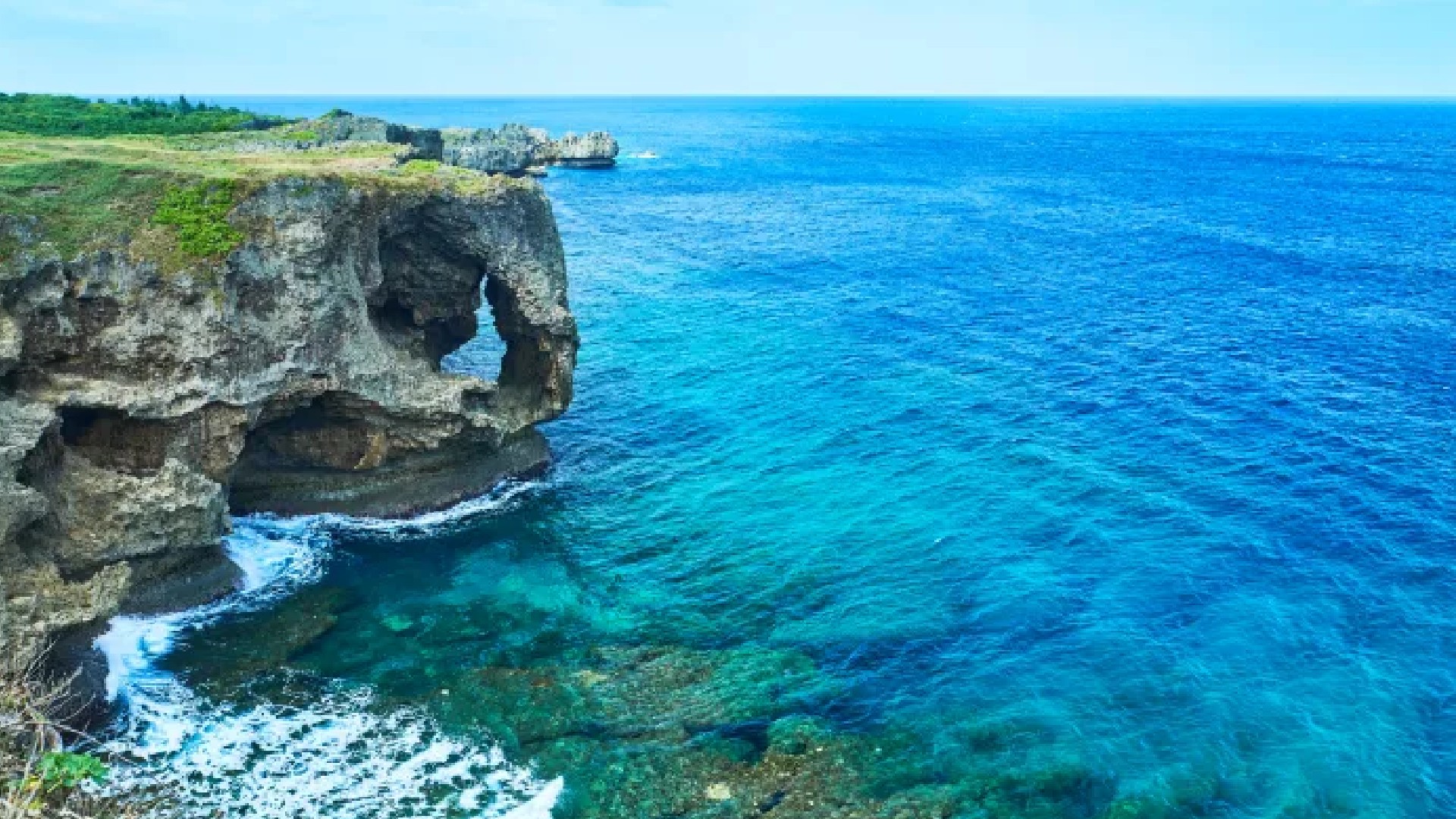White-sand beaches, fantastic snorkeling and diving sites, great food, unique culture, and warm people all make Okinawa a must-see place in Japan. As the country’s southernmost group of islands, Okinawa is one of the most popular tourist destinations in the country not only among foreign travelers, but Japanese locals as well.
This is a place that is unlike any other in the Land of the Rising Sun. For more about what makes Okinawa so unique, scroll to the bottom of this article!
10 Must-See Places in Okinawa
Indeed, there are many places to visit when travelling in Okinawa. I won’t overwhelm you, though—below are just 10 must-see places on this gorgeous island.
1. Taketomi Island

A UNESCO World Heritage Site and a Japanese Living Treasure, Taketomi Island (or Taketomijima) preserves the slow-paced life Japanese people had in the ancient times.
Taketomijima is the place where a small and original Ryukyu village still stands well-preserved. In this village, one can find traditional bungalow houses built with stone walls, covered with tiled roofs, and guarded with lionlike icons that are believed to ward off evil spirits.
Taketomijima can be traveled by foot, riding on bicycles, or riding in buffalo carts. On the island, people can also swim in the unspoiled beaches, eat local foods, and stay in minshuku, or Japanese-style bed and breakfasts.
2. Iriomote Island

Most of Iriomote is designated as a protected national park and covered with mangrove forests and jungles. Visitors can enjoy cruising in the river, kayaking through the island’s interiors, fishing, sailing, and even diving.
A good number of manta rays and other beautiful sea animals swim in Iriomote during the spring and summer seasons.
3. Churaumi Aquarium

The massive Churaumi Aquarium gives visitors a peek at the rich marine life in Okinawa. It is one of Japan’s best aquariums and one of the biggest in the world.
The highlight of the Churaumi Aquarium is the Kuroshio Tank, which contains large whale sharks, manta rays, and other sea animals that all live in the Kuroshio current, helping to give Okinawa its enviable marine riches.
Other attractions in the aquarium include a tank dedicated exclusively to sharks, another tank where bioluminescent fishes are put on display, and a show area that features dolphins, manatees, and turtles.
4. War Memorials

From April to June of 1945, the tiny island of Okinawa became one of the bloodiest battlegrounds of World War II, with about 200,000 war-related deaths and countless more suicides. As a reminder of the past, the people of Okinawa have created monuments and museums about World War II.
Included in the grim reminders of Okinawa’s past are the island’s preserved caves and tunnels, which Japanese people used as hospitals, military headquarters, and eventually as places for committing suicide during the war. Many of the Japanese who worked under appalling conditions in the caves and tunnels did not survive the fighting.
5, 6, and 7: Maehama Beach, Yoshino Beach, and Sunayama Beach

Miyako Island (or Miyakojima) in Okinawa is home to three stunning beaches: Maehama, Yoshino, and Sunayama. These white-sand beaches have clear waters that are ideal for swimming. Many visitors to these three beaches also enjoy snorkeling and diving.
Sand dunes, coral reefs, and varied kinds of fish are found at these three popular Okinawan beaches.
8. Shuri Castle

Shuri Castle (or Shurijo) is part of a UNESCO World Heritage Site called Castles of the Ryukyu Kingdom. Shurijo is located atop a hill, is pierced by several large gates, and has ornately decorated buildings (most of which are vermillion).
It was the official residence of the Ryukyu monarchs until 1879.
9. Tamaudun Mausoleum

A traditional Okinawan mausoleum made of stones but built on a grand scale is the Tamaudun Mausoleum, also part of the UNESCO World Heritage Site called Castles of the Ryukyu Kingdom and Related Sites.
The mausoleum was built in the 16th century but sustained damages during World War II. Today, three surviving chambers can still be found: one for kings and queens, another for princes and princesses, and another for housing bodies.
10. Sefa Utaki

A very important religious site for ancient Okinawans is the Sefa Utaki, a rather simple place with rock formations located on the side of a hill that overlooks the ocean. Sefa Utaki has historically been important not just to the ordinary people of Okinawa, but also the Ryukyu monarchs and their families.
It is yet another part of the UNESCO World Heritage Site called Castles of the Ryukyu Kingdom and Related Sites.
What Makes Okinawa Such a Special Place?
- Its temperature is subtropical, meaning there is plenty of sunshine all year round, even in the cold months of winter. Okinawa’s temperature is found nowhere else in Japan, where winter can otherwise be a bit harsh, particularly in the northern island of Hokkaido.
- It is completely surrounded by pristine waters where plenty of unique sea animals are found. It is arguably the best snorkeling and diving destination in the whole of Japan.
- It is unique from the rest of the country, with its own language, arts, and cuisine. It was an autonomous kingdom for a long time before it was officially annexed to Japan in 1879.
- Life in Okinawa is much less hurried than most places in mainland Japan, which is very modern and quite busy.
- It has a rich history. During World War II, it was a hostile battleground of Japanese and Americans, who all fought bravely until death.
